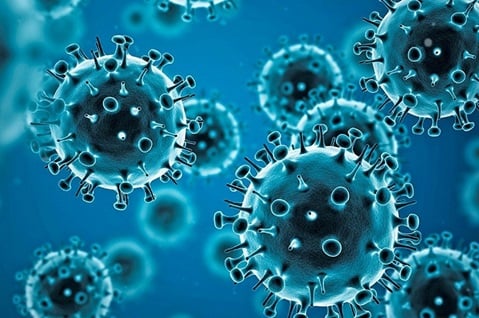News Highlight
H3N2 flu claims two lives: Health Ministry.
Key Takeaway
- At least two people have died due to the H3N2 strain of seasonal influenza.
- The Health Ministry stated that it had infected an increasing number of persons since mid-December of last year.
- Following a nationwide surveillance effort, the Ministry reported finding at least 451 confirmed cases of H3N2 since the beginning of this year.
Influenza
- About
- Influenza is a viral disease.
- It is caused by the pathogen Orthomyxovirus (influenza virus).
- It is a contagious disease which can readily spread from person to person.
- Influenza viruses transmit from person to person primarily by droplets of respiratory secretions released into the air when a person infected with the virus coughs or sneezes.
- Humans and many different animals are infected by influenza A viruses.
- Because of their potential to trigger an influenza pandemic, influenza type A viruses are the most dangerous to public health.
- Influenza type A viruses are categorised into subtypes based on the combinations of hemagglutinin (HA) and neuraminidase (NA), two virus surface proteins.
- Fever, cough and runny nose indicate a respiratory infection.
- Some of the primary symptoms of the virus are body aches, nausea, vomiting, or diarrhoea, among others.
Influenza A virus subtype H3N2
- About
- The “Hong Kong flu,” commonly known as H3N2, is a kind of influenza virus that can cause respiratory illness in humans.
- It is a subtype of the Influenza A virus that has previously caused multiple influenza outbreaks.
- Spread
- H3N2 influenza is highly contagious and can be passed from person to person via droplets produced when an infected person speaks, coughs, or sneezes.
- It can also be spread by touching a virus-infected surface and touching one’s lips or nose.
- Symptoms
- Fatigue, chills, headache, body aches, runny nose, sore throat, cough, and fever.
- Diarrhea and vomiting may also occur in certain persons.
- The symptoms normally last approximately a week, although some people may have them for a longer period of time.
- Vaccine for H3N2
- The flu vaccine, according to the CDC, reduces the risk of flu disease in the general population by 40 to 60 per cent during most flu seasons when the vaccine strains match circulating viruses.
- In comparison to H3N2 viruses, the flu vaccine provides higher protection against flu caused by H1N1 and influenza B viruses.
- Treatment
- Treatment for a simple case of seasonal flu, such as H3N2, entails symptom management as you recover.
- Ways to do this include;
- Getting enough rest, drinking plenty of fluids, and taking over-the-counter medication to ease symptoms such as fever, headache, and aches and pains are all ways to accomplish.
- Some people are more likely than others to have significant flu complications.
- These problems can include pneumonia or a deterioration of an underlying medical condition, such as asthma.
Indian Council of Medical Research (ICMR)
- About
- The ICMR is India’s top body for developing, coordinating, and promoting biomedical research.
- It was founded in 1911 as the Indian Research Fund Association (IRFA).
- IRFA was renamed ICMR in 1949.
- The Indian government funds the ICMR.
- It comes under the Department of Health Services (DHS), Ministry of Health and Family Welfare (MoH&FW).
- The ICMR’s headquarters are in New Delhi.
- It is neither a statutory body nor a regulatory body.
- The Clinical Trials Registry India (CTRI) is hosted by the ICMR.
- It was founded on July 20, 2007.
- It is a free online public record system for clinical trials undertaken in India.
- Since 1913, it has been publishing the Indian Journal of Medical Research (IJMR).
- The National Institute of Nutrition (NIN) of the ICMR was founded in 1918 as the ‘Beri Beri Inquiry’ at the Pasteur Institute in Coonoor, Tamil Nadu.
- The governing body of the ICMR is presided over by India’s Union Health Minister.
- The ICMR comprises 27 institutes/regional medical research centres.
Pic Courtesy: Hindustan Times
Content Source: The Hindu



